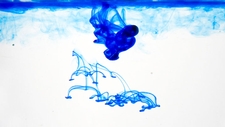Mixtures in Which Properties of Ingredients Change (Solutions)
Supporting

TEKS Objective
Students will identify changes that can occur in the physical properties of the ingredients of solutions such as dissolving salt in water or adding lemon juice to water.
Essential Understanding
The student knows that (1) matter has measurable physical properties and (2) those properties determine how matter is classified, changed and used.
Science Background
What are Mixtures and Solutions? Virtual Chembook from Elmhurst College (website) - Easy-to-read chart that defines and differentiates between homogenous and heterogeneous mixtures, solutions and colloids.
What are Mixtures and Solutions?
Virtual Chembook from Elmhurst College, www.elmhurst.edu
Solutions and Mixtures: Chem4Kids (website) - Chem4Kids provides basic information about solutions and mixtures with clear illustrations and descriptions that aid in understanding basic chemistry.
Solutions and Mixtures
Chem4Kids, http://chem4kids.com
Acids and Bases: VisionLearning (website) – Lemon juice tastes sour because it contains a weak acid. Learn about acids and how they dissolve in water.
Signature Lesson
What Dissolves in Water: BioEd Online (website) - Students investigate whether several common substances are soluble in water.
What Dissolves in Water
BioEd Online, www.bioedonline.org
- Supporting Lessons
- Extensions
- Assessment Ideas
- Literature Connections
- Related
TEKS - Additional Resources
Supporting Lessons
How Can We Find Out What Is in Water? BioEd Online (website) - Students use simple paper chromatography to investigate a mystery liquid composed of different substances dissolved in water.
How Can We Find Out What Is in Water?
BioEd Online, www.bioedonline.org
Fuel for Living Things: BioEd Online (website) - Students make their own purple cabbage juice indicator and identify the color changes for acids and bases. Use Sessions 1 and 2 of this activity.
Fuel for Living Things
BioEd Online, www.bioedonline.org
Properties of Mixtures and Solutions: University of Virginia (website) - Students make observations, organize and analyze information, and measure and record data while identifying, separating and determining the concentrations of components in mixtures.
Properties of Mixtures and Solutions
University of Virginia, http://galileo.phys.virginia.edu
Elaboration Lessons and Extensions
Homogeneous and Heterogeneous Mixtures: TeachersNet (website) - Provides examples of six different simple mixtures (sand and water, for example) to use with students.
Homogeneous and Heterogeneous Mixtures
TeachersNet, http://teachers.net
Mixtures and Solutions Lesson Plans, Worksheets, Printables: Plan It (website) Search Plan It allows you to find lessons and other resources on the area of physical science.
Mixtures and Solutions Lesson Plans, Worksheets, Printables
Plan It, www.searchplanit.com
Assessment Ideas
- Have students create a chart of sample mixtures and non-mixtures.
- Administer performance assessments that challenge students to separate different types of mixtures. Give each group a different mixture, or provide the same mixture to each group (such as salt and water, or flour and water).
Literature Connections
Mix It Up! Solution or Mixture? Nelson, Tracy (ISBN-13: 978-1618102270)
Matter. Cooper, Christopher (ISBN-13: 978-0751361353)
Salt. Walpole, Brenda (ISBN-13: 978-1560740605)
Mixtures and Solutions: Why Chemistry Matters. Aloian, M. (ISBN-13: 978-0778742500)
Mixtures and Solutions: Building Blocks of Matter. Richard Spilsbury (ISBN-13: 978-1403493446)
Additional Resources
Examples and Non-Examples of Solutions and Mixtures: SlideShare (website) - Slide presentation of images showing examples and non-examples of solutions and mixtures.
Examples and Non-Examples of Solutions and Mixtures
SlideShare, www.slideshare.net
TEKS Navigation
Grade 5
User Information
Not Registered Yet?
Sign Up Today!
Need Assistance?
If you need help or have a question please use the links below to help resolve your problem.

Comments